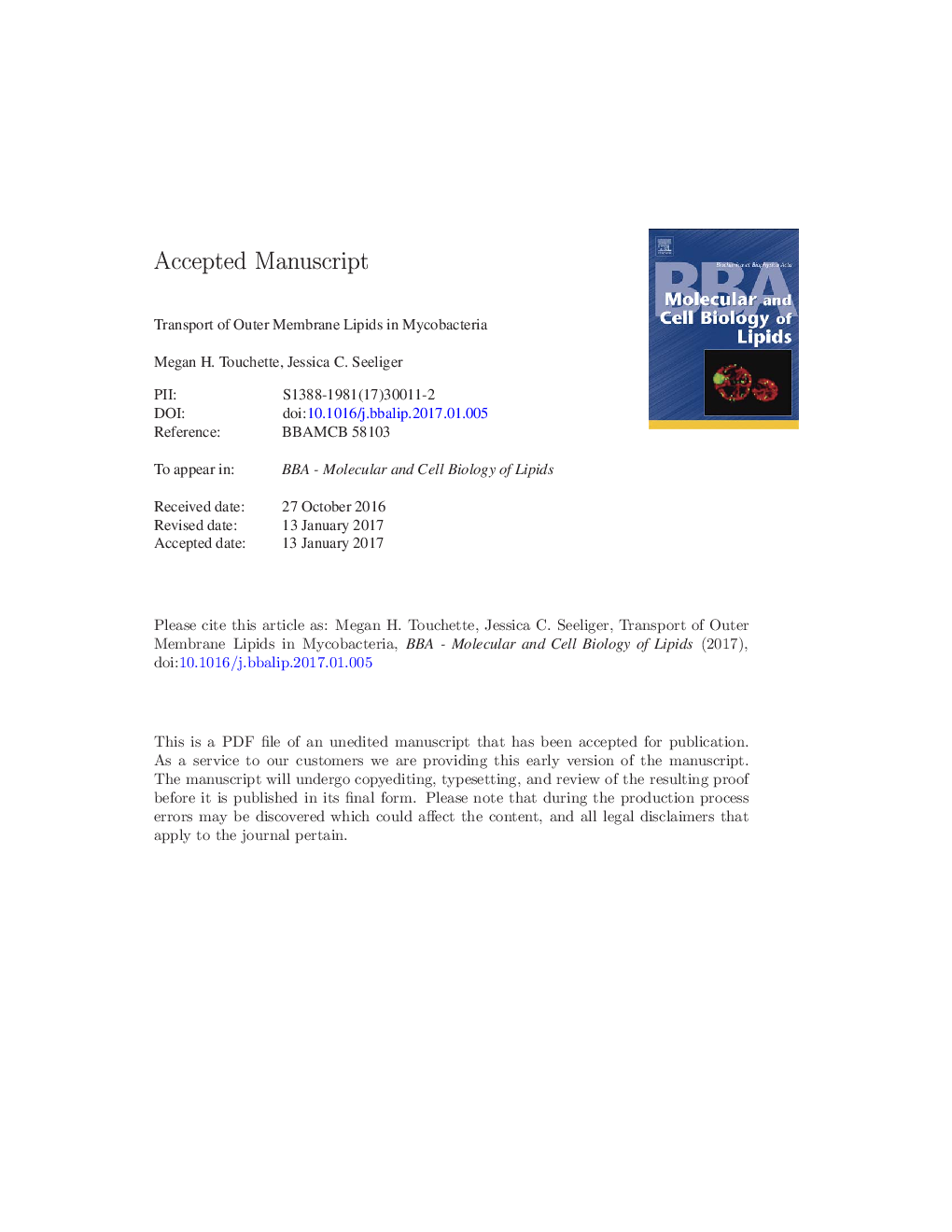| Article ID | Journal | Published Year | Pages | File Type |
|---|---|---|---|---|
| 5508302 | Biochimica et Biophysica Acta (BBA) - Molecular and Cell Biology of Lipids | 2017 | 75 Pages |
Abstract
The complex organization of the mycobacterial cell wall poses unique challenges for the study of its assembly. Although mycobacteria are classified evolutionarily as Gram-positive bacteria, their cell wall architecture more closely resembles that of Gram-negative organisms. They possess not only an inner cytoplasmic membrane, but also a bilayer outer membrane that encloses an aqueous periplasm and includes diverse lipids that are required for the survival and virulence of pathogenic species. Questions surrounding how mycobacterial outer membrane lipids are transported from where they are made in the cytoplasm to where they function at the cell exterior are thus similar, and similarly compelling, to those that have driven the study of Gram-negative outer membrane transport pathways. However, little is understood about these processes in mycobacteria. Here we contextualize these questions by comparing our current knowledge of mycobacteria with better-defined systems in other organisms. Based on this analysis, we propose possible models and highlight continuing challenges to improving our understanding of outer membrane assembly in these medically and environmentally important bacteria. This article is part of a Special Issue entitled: Bacterial Lipids edited by Russell E. Bishop.
Related Topics
Life Sciences
Biochemistry, Genetics and Molecular Biology
Biochemistry
Authors
Megan H. Touchette, Jessica C. Seeliger,
